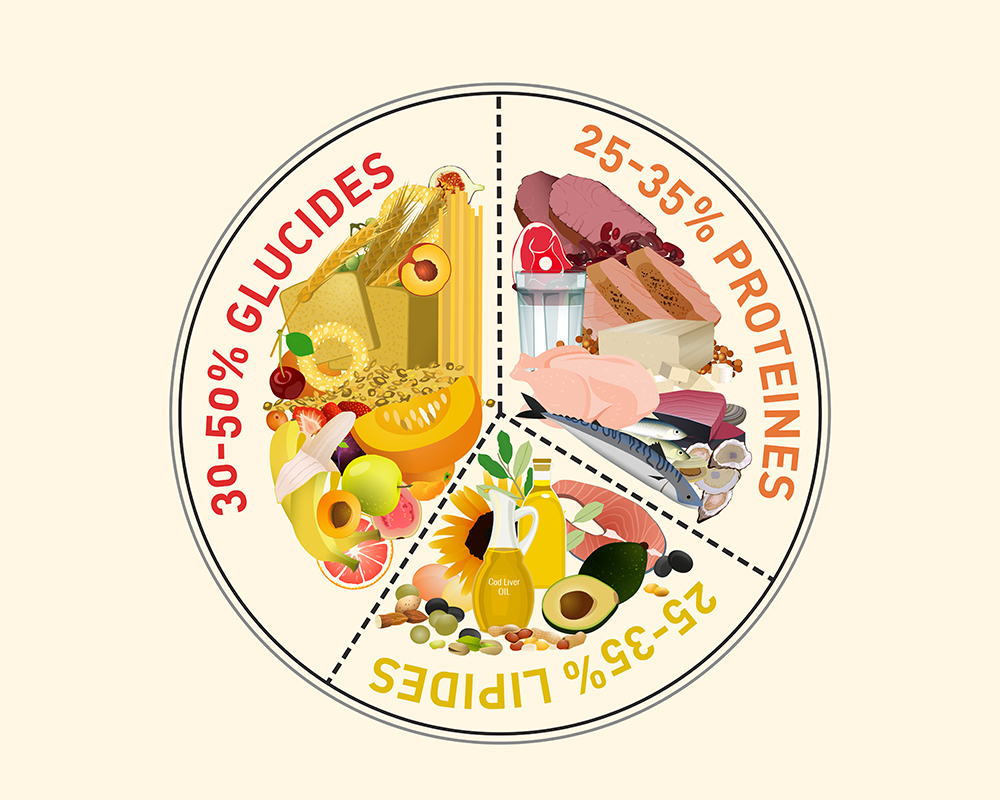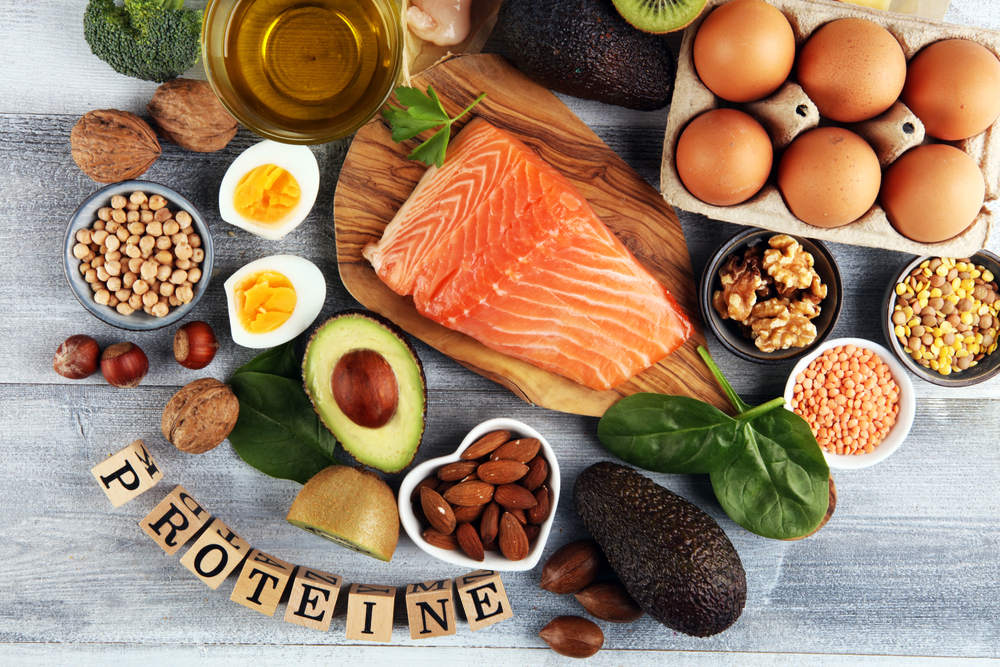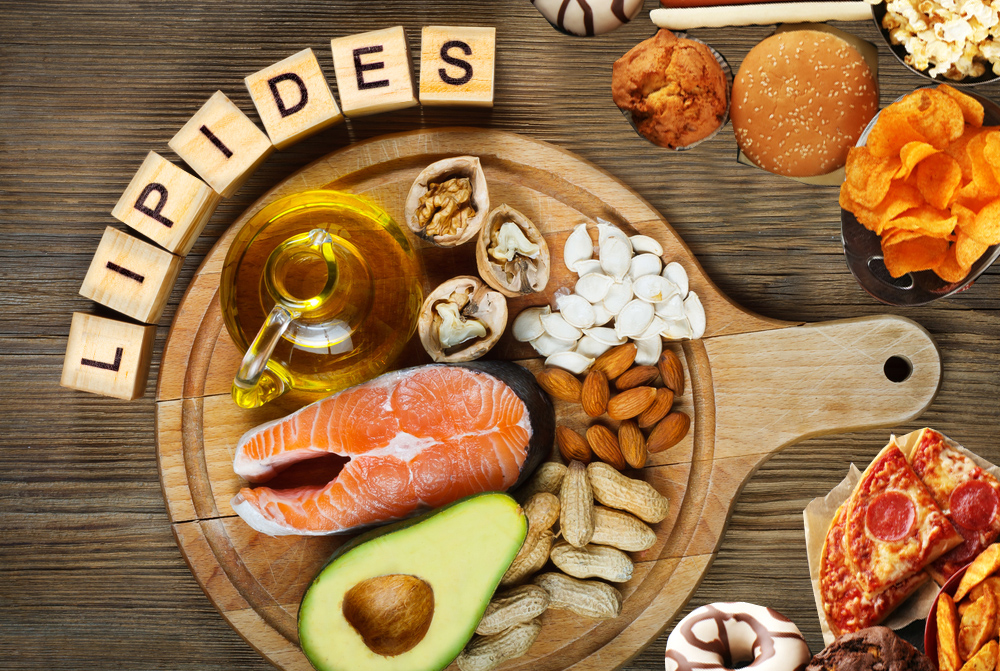There are 3 families of macronutrients: carbohydrates, proteins and fats. They help to provide the energy the body needs and ensure its proper functioning, provided that the distribution of macronutrients is well balanced. It is therefore essential to calculate the amounts of macronutrients your body needs.
Macronutrients
Protein: Protein is made up of amino acids that are involved in muscle building and recovery1 , but also in other biological processes such as immune defence2 and detoxification3. Proteins are found in meat, fish and eggs, but also in legumes (lentils, kidney beans, chickpeas, etc. ). From an energy point of view, 1 gram of protein provides 4 kcal.
Fats: They are involved in the immune system4, hormone synthesis5 and brain function6. Many foods contain lipids, but it is important to favour sources of lipids rich in omega 3 such as oily fish (salmon, mackerel, sardines). 1 gram of fat provides 9kcal.
Carbohydrates: These mainly contribute to providing energy to the body. Here again, many foods are sources of carbohydrates. However, it is preferable to choose carbohydrates with a low glycaemic index (wholemeal cereals, legumes, etc. ), i. e. those that induce a lower secretion of insulin, which is a storage hormone (particularly for fat).
In order to calculate your macronutrients, you must first calculate your calories.
Calorie calculation
The calorie calculation is divided into 2 steps.
Calculating your basal metabolic rate (BM):
This is the energy, expressed in kcal, that your body needs to carry out its vital functions at rest. There are several formulas for calculating it, but here we will use the Roza and Shizgall formula 7:
- Female: MB = 9. 740 x Weight(kg) + 172. 9 x Height(m)- 4. 7373 x Age(yr) + 667. 051
- Male: MB = 13. 707 x Weight(kg) + 492. 3 x Height(m) - 6. 673 x Age(yr) + 77. 607
Let's take the example of Tom, 23 years old, 70 kilos for 1m80. His basal metabolic rate is then equal to:
13. 707 x 70 + 492. 3 x 1. 80 - 6. 673 x 23 + 77. 607 = 1769. 758 kcal at rest
Calculate your daily energy requirements (BEJ):
To do this, multiply the MB by the level of physical activity (NAP):
- Sedentary: x 1. 375
- Light PAL: x 1. 56
- Moderate PAL: x 1. 64
- Heavy PAN: x 1. 82
So in the case of Tom, who has a moderate level of physical activity (3 to 6 workouts per week):
BEJ = MB x NAP = 1769. 758 x 1. 64 = 2902. 4 kcal
Once the calculation of calorie requirements is done, it becomes possible to calculate his macronutrients.
Calculating your macronutrients
The amount of protein
Protein intake should be around 15% of the daily calorie intake. However, this amount can vary according to the sport that is practised. For a sedentary person the requirement is 0. 8 to 1g of protein per kg of body weight. For a strength sport, it is recommended to consume about 1. 6g of protein/kg of body weight. For an endurance sport, it is advisable to consume about 2g of protein/kg of body weight.
For Tom who practices bodybuilding, therefore a strength sport:
1. 6 x 70 = 112 grams of protein per day
However, it is important to ensure that you have a quality protein intake, i. e. with a good amino acid profile or by combining different sources between them.
The amount of fat
It is recommended to consume 1g of fat/kg of body weight.
For Tom:
70x 1 = 70 grams of fat/ per day
Fat intake should be mainly in the form of so-called "unsaturated" fats, which are essential for the proper functioning of the body.
The amount of carbohydrates
The carbohydrate intake plays an adjusting role according to the desired objectives: it must be reached for maintenance, higher for weight gain or lower for weight loss. Thus, there is no recommended daily value. The amount of carbohydrates depends on the amount of protein and fat calculated earlier.
For Tom:
- 1 gram of protein provides 4 kcal. So 112 grams provides: 112×4 = 448kcal
- 1 gram of fat provides 9kcal. So 70 grams provides: 70×9 = 630 kcal
Tom's BEJ is 2902. 4 kcal/day. Fat and protein provide him with 630+448 kcal = 1078kcal.
Thus, the proportion of carbohydrates Tom must have is: 2902. 4-1078 = 1824. 4 kcal of carbohydrates per day.
Or, 1 gram of carbohydrate provides 4kcal. For weight maintenance, Tom must therefore consume:
1824. 4/4 = 456. 1 grams of carbohydrates/day
As mentioned earlier, low-glycemic index carbohydrates are to be preferred. They have less impact on insulin secretion and therefore limit fat storage and have a greater satiating power.
Our advice
Once the needs have been calculated, it becomes possible to build a diet and establish a logical distribution of macronutrients adapted to your objectives. Firstly, the protein and fat intake is calculated. Then the carbohydrate intake is adjusted according to whether the objective is weight gain or weight loss. To do this, you can use nutritional tables of foods (such as the Ciqual 10 table) or smartphone applications that calculate the amount of macronutrients you consume in your meals.
bibliographie
1. Burke LM, van Loon LJC, Hawley JA. Postexercise muscle glycogen
resynthesis in humans. Journal of Applied Physiology 2017;122:1055-1067.
2.
Grimble RF, Grimble GK. Immunonutrition: role of sulfur amino acids,
related amino acids, and polyamines. Nutrition 1998;14:605-610.
3.
Wada Y, Takeda Y, Kuwahata M. Potential role of amino acid/protein
nutrition and exercise in serum albumin redox state. Nutrients 2017;1
4.
Calder PC, Bosco N, Bourdet-Sicard R, Capuron L, Delzenne N, Doré Jand
al. Health relevance of the modification of low-grade inflammation
in ageing (inflammaging) and the role of nutrition. Ageing Research
Reviews 2017;41:95-119.
5. Miller WL. Steroidogenesis:
Unanswered Questions. Trends in Endocrinology & Metabolism 2017;28:771-793.
6.
Weiser MJ, Butt CM, Mohajeri MH. Docosahexaenoic Acid and Cognition
throughout the Lifespan. Nutrients 2016;8.
7. Roza AM,
Shizgal HM. The Harris Benedict equation reevaluated: resting energy
requirements and the body cell mass. The American Journal of Clinical
Nutrition 1984;41:168-182.
8. ANSES. Updating of the PNNS
benchmarks: development of nutritional references. 2016.
9. ANSES.
Update of the recommended dietary allowances for fatty acids. Collective
expertise report. 2011https://www. anses.
fr/fr/system/files/NUT2006sa0359Ra. pdf. Accessed 12 November 2018.




